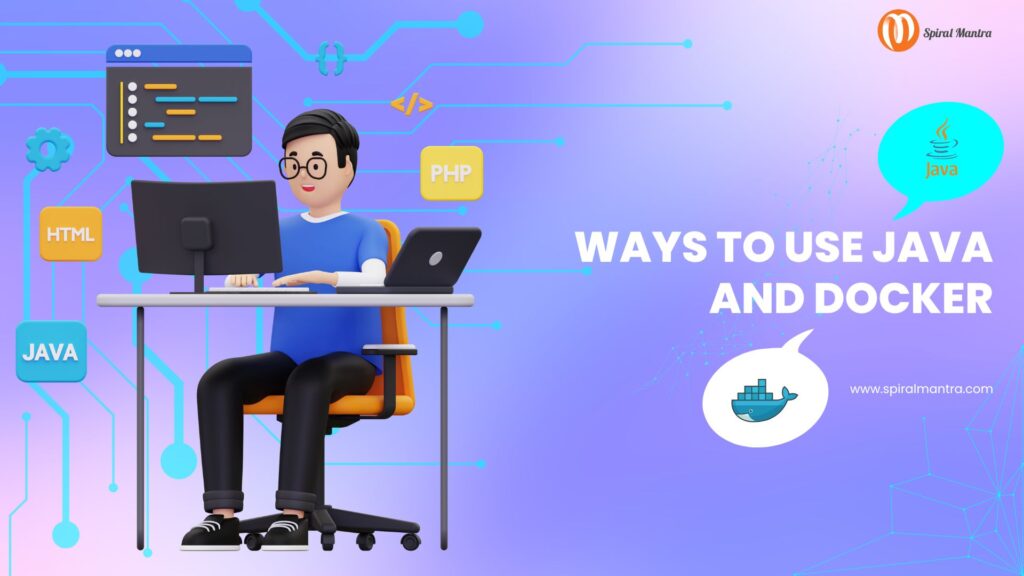Want a perfect containerization of
Java using Docker? You are at the right place. In this blog, you will get the insights about how Java and Docker act as a perfect combination for developing robust and scalable microservices. When combined, they create a dynamic pair that simplifies application development, deployment, and management.
If you create code in a language that leverages a virtual machine, such as Java, and your code frequently generates a single binary (a so-called "fat JAR"), then you're already halfway to using containers.
This is fantastic since a JAR file may already be executed anywhere Java is installed. However, Docker adds the cherry on top by making your entire application—including the Java JVM—portable. Because the JRE is installed directly within the Docker image, there is no need to worry about which version of the JRE is present on the host.
Importance of using Docker with Java
Docker development promises to provide a consistent testing environment across developer computers and the different environments (QA and production) that are in use. The challenge is in the additional abstraction that Docker containers bring, which developers have to handle when developing.
Docker makes it possible to bundle application code into a cross-platform, runnable package together with the specification of its system requirements. While this is a nice abstraction to address a basic need in software runtime deployment and management, it adds another level of indirection that needs to be managed when programmers are iteratively changing and testing the internal workings of the software and its dependencies.
Ways to fully utilise Docker and Java:
Containerized Development Environment -
The development trends are constantly changing now the development environments of various machines do not require to be coordinated. The lightweight containers created by the docker are very important for the whole development environment and they contain all of the dependencies, libraries, and
Java runtime. If you want to speed up development and enhance portability, containerizing the Java development environment using Docker is the best option as it works without getting affected by the size of the project or business program.
Microservices Architecture -
Designing and implementation of current systems are transformed by the use of microservices architecture. Java’s adaptability and Docker's containerization matches perfectly when building microservices-based apps. Containerizing each microservice can help developers easily provide fault tolerance, separate dependencies, and grow components independently.
Docker’s orchestration tools, such as
Kubernetes, and Java's vast ecosystem of frameworks and libraries can help withstand the rigours of today's dynamic workloads by building robust, distributed systems.
Continuous Integration and Delivery (CI/CD) -
The
DevOps era is known for software delivery pipeline optimization and
CI/CD automation is necessary to serve this purpose. Building Java applications by Docker helps developers construct lightweight, repeatable environments. For delivering best CI/CD processes Docker and Java can be employed. Docker can be used to package applications into portable containers. Jenkins, GitLab CI, and Travis CI are some of the solutions that can be utilised to automate the entire build, test, and deployment process.
Hybrid Cloud Deployments -
Importance of flexible deployment is increasing because the trends show that enterprises are using hybrid cloud infrastructures. Docker containers may make Java apps cloud agnostic by nature and due to which they can be effectively deployed in hybrid environments, on-premises data centres, and public clouds. Java applications in a hybrid cloud environment can be made more scalable and robust by employing cloud native technologies like
Kubernetes and Docker Swarm. There are many cloud platforms including AWS, Azure, or Google Cloud. Java and Docker, regardless of the platform your workloads are running on, provide flexibility and agility required to handle the complexity of modern IT trends.
Conclusion
Summarising the above assertions, it is very clear that java and docker can bring about revolution in the process of microservices development. Containerization of Java using Docker is the best available method to carry out abstraction for addressing the basic need in software runtime deployment and management. Containerized development environment,
Microservices Architecture, Continuous Integration and Delivery (CI/CD), and Hybrid Cloud Deployments are some of the ways by which we can fully utilise the features of Docker and Java.
